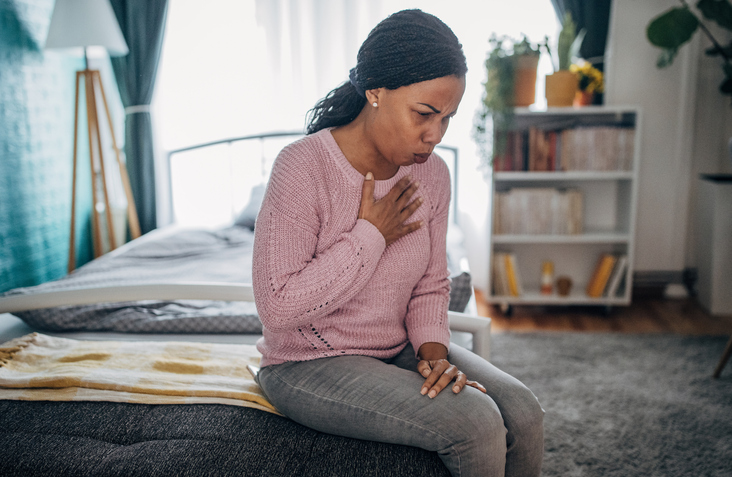How Heart Attack Symptoms Show Up Differently In Women

Source: South_agency / Getty
Heart disease is the leading cause of death among women in the U.S., says the CDC, causing an estimated one in five female deaths. Additionally, Black women face a higher risk of heart disease. Go Red For Women reported that 59 percent of Black women over the age of 20 have heart disease, but the majority do not know what the symptoms of a heart attack are.
Here’s what complicates matters more: the heart attack symptoms for women can differ from those for men. Recognizing signs and seeking help immediately increase the chances of a woman’s survival following a cardiac event.
Women Underreport Pain

Source: LumiNola / Getty
The University of Utah’s The Scope Radio conducted an interview with one cardiologist who explained that women underreport pain levels. Pain that men describe as a level 10, women will describe as a five. Black women are even more likely to underreport pain levels, says AMA Journal of Ethics.
How Symptoms Are Different For Women

Source: ProfessionalStudioImages / Getty
Love MadameNoire? Get more! Join the MadameNoire Newsletter
We care about your data. See our privacy policy.
Because women often wait longer to acknowledge they could be having a heart attack, their symptoms have transformed at that point. Early symptoms often include pain down the left arm, pain on the left side of the chest, sweating and nausea. However, the longer women wait, the more pain transfers to both arms and the center of the chest. Additionally, women experience some symptoms differently. Women are more likely to describe the pain men feel in their chest as pressure or tightness.
The National Institute of Health reports that some symptoms are more common in women than men. These include middle or upper back pain, neck and jaw pain, indigestion, nausea, dizziness and cough.
Learning to recognize the symptoms of a heart attack and being transparent about pain levels could be the link between life and death.







